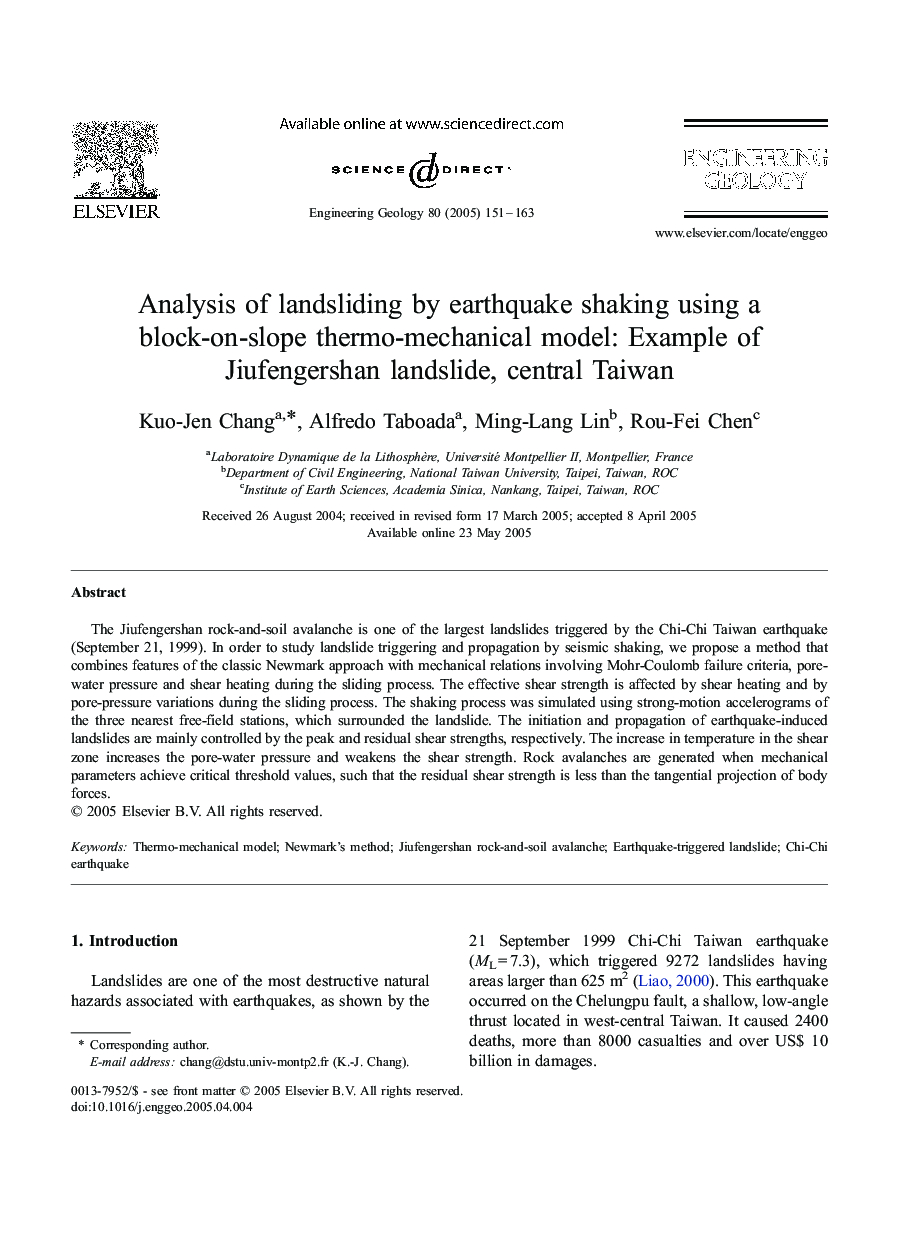| کد مقاله | کد نشریه | سال انتشار | مقاله انگلیسی | نسخه تمام متن |
|---|---|---|---|---|
| 9537814 | 1641924 | 2005 | 13 صفحه PDF | دانلود رایگان |
عنوان انگلیسی مقاله ISI
Analysis of landsliding by earthquake shaking using a block-on-slope thermo-mechanical model: Example of Jiufengershan landslide, central Taiwan
دانلود مقاله + سفارش ترجمه
دانلود مقاله ISI انگلیسی
رایگان برای ایرانیان
کلمات کلیدی
موضوعات مرتبط
مهندسی و علوم پایه
علوم زمین و سیارات
مهندسی ژئوتکنیک و زمین شناسی مهندسی
پیش نمایش صفحه اول مقاله

چکیده انگلیسی
The Jiufengershan rock-and-soil avalanche is one of the largest landslides triggered by the Chi-Chi Taiwan earthquake (September 21, 1999). In order to study landslide triggering and propagation by seismic shaking, we propose a method that combines features of the classic Newmark approach with mechanical relations involving Mohr-Coulomb failure criteria, pore-water pressure and shear heating during the sliding process. The effective shear strength is affected by shear heating and by pore-pressure variations during the sliding process. The shaking process was simulated using strong-motion accelerograms of the three nearest free-field stations, which surrounded the landslide. The initiation and propagation of earthquake-induced landslides are mainly controlled by the peak and residual shear strengths, respectively. The increase in temperature in the shear zone increases the pore-water pressure and weakens the shear strength. Rock avalanches are generated when mechanical parameters achieve critical threshold values, such that the residual shear strength is less than the tangential projection of body forces.
ناشر
Database: Elsevier - ScienceDirect (ساینس دایرکت)
Journal: Engineering Geology - Volume 80, Issues 1â2, 8 August 2005, Pages 151-163
Journal: Engineering Geology - Volume 80, Issues 1â2, 8 August 2005, Pages 151-163
نویسندگان
Kuo-Jen Chang, Alfredo Taboada, Ming-Lang Lin, Rou-Fei Chen,